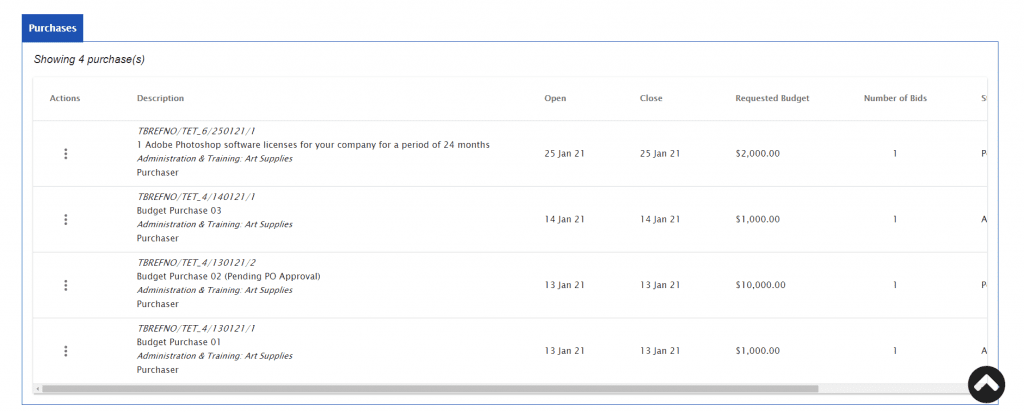How to build a successful remote procurement team?
The COVID-19 pandemic has accelerated the rate at which industries around the world are digitalising. And the procurement world is no exception.
In fact, a survey by the Institute for Supply Management revealed that 75% of companies experienced supply disruptions due to transport restrictions imposed by governments around the world.
Not only was the international supply chain disrupted, so too were the teams managing the procurement process as governments established ‘new normals’ for the workforce. While digital procurement has streamlined the process side of things, manpower management remained a huge issue at the start.
In this article, we will discuss the best practices when it comes to establishing an effective remote procurement team.
Things to pay attention to when building remote procurement teams
1) Communication among team members
This is perhaps one of the biggest challenges many businesses faced when they first shifted work online.
Being away from teammates means that clarifying doubts is harder and takes more time. It also means that the intent of messages can get lost. Communicating through texts and emails is known to cause miscommunication and misunderstanding.
2) Workflow management
Another thing that managers are concerned with is accountability when it comes to the delivery of work. Unfortunately, many Singaporean employers did not even want their employees to work from home due to distrust.
Thankfully, there are collaborative tools out there that not only help keep track of tasks but ensures openness and accountability as anyone on the team can view the information.
3) Procurement processes and operations
Many companies still engage in the procurement process using traditional methods. These include manual data entry, manual customer information tracking, and even bid auctions. With current restrictions in place, many of these processes need to be reviewed.
This also means that a lot of companies are still using paper documents. Access to these documents then become an issue when the entire team has to work away from the office.
4) Communication with suppliers
It is essential that you prioritise regular communication with vendors. Especially when your team is working remotely or if you’re working with clients from other countries.
Be open and transparent about your own company and build trust so that suppliers feel comfortable keeping you updated with what’s happening with their own processes.
How to shift to remote procurement successfully
Tools you should use
1) Use messaging apps
Now, just because text messages have caused a bit of miscommunication, it doesn’t mean that they shouldn’t be used at all. Instant messaging apps are great tools to communicate with your teammates. Some of the more popular ones include Whatsapp, Facebook Messenger, Telegram, and Slack.
Interestingly, there are some up-and-coming apps that have risen to fame recently. One of which is Signal. When Whatsapp announced that it will be updating its privacy policy, discussions over privacy concerns dominated the internet for a short period of time. Many were making comparisons between Signal and Telegram or Signal and Whatsapp to identify the best Whatsapp substitute.
2) Video conferencing apps
To complement messaging apps, video conferencing tools are a great tool to connect with your teammates on a more personal level.
Unsurprisingly, many people quickly adopted them as a tool of communication. They became so popular that they grew very quickly during the early stages of the pandemic. In fact, Zoom grew by 353.7% year on year in March 2020.
3) Project management tools
In order to address issues regarding distrust towards employees, businesses need to use project management tools that provide transparency in terms of task progress and deadlines.

For example, Notion allows users to create task cards on its customisable project management templates. Managers can set deadlines, break a task down into sub-tasks, and assign individuals or teams to work on the task.
The beauty of tools this Notion is that the information is completely visible and accessible to all members of the team. Managers can even insert the links to the shared Google documents where the work needs to be done. This way, not only will employers’ distrust in employees be alleviated, but teams can also work collaborate effectively even while working remotely.
4) E-procurement tools
Getting the right e-procurement tools is essential to building a remote procurement team. The best tools out there digitalise and streamline core components of your procurement process.



For example, Tenderboard allows you to manage your procurement budget, contracts, supplier relationships, and even your procurement documents all on a single platform.
5) E-signature software
Physical contract signings are impossible when your team works remotely or when your client is a foreign one.
Software like Adobe Acrobat, DocuSign, and DropboxSign help businesses bypass this issue completely. They allow a digital signature to be inserted into the softcopy of documents.
Signed documents can now be simply signed and sent via the touch of a button.
Conclusion
The end of the pandemic is nowhere near in sight. Even if we are approaching that day, the growth of the gig economy doesn’t seem to be slowing down anytime soon. Tools that help you manage remote teams and processes will continue to be essential in any workforce.













